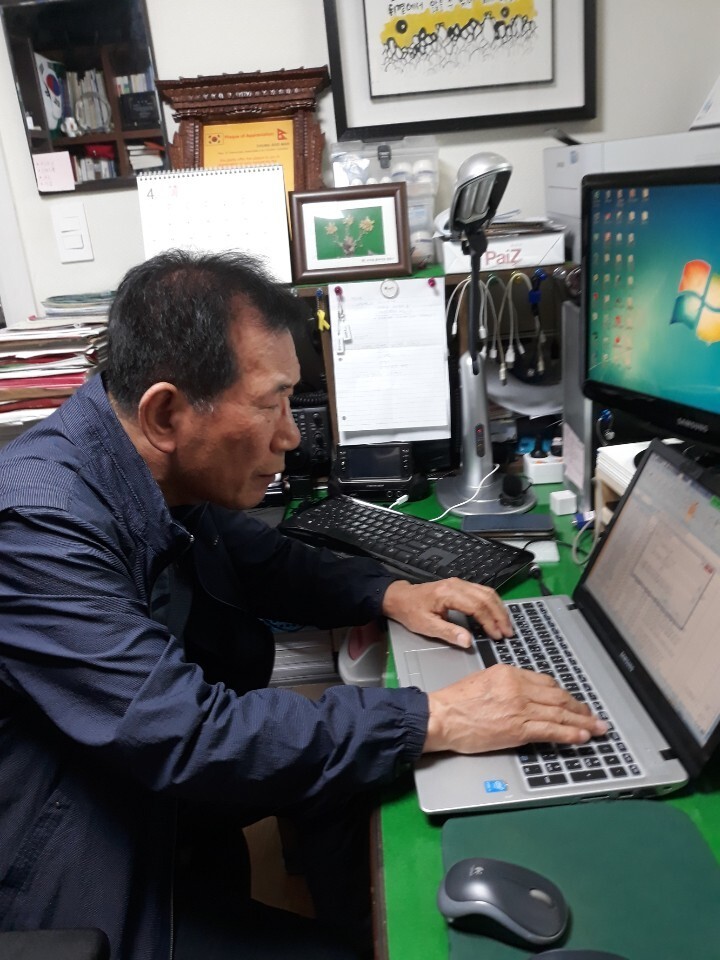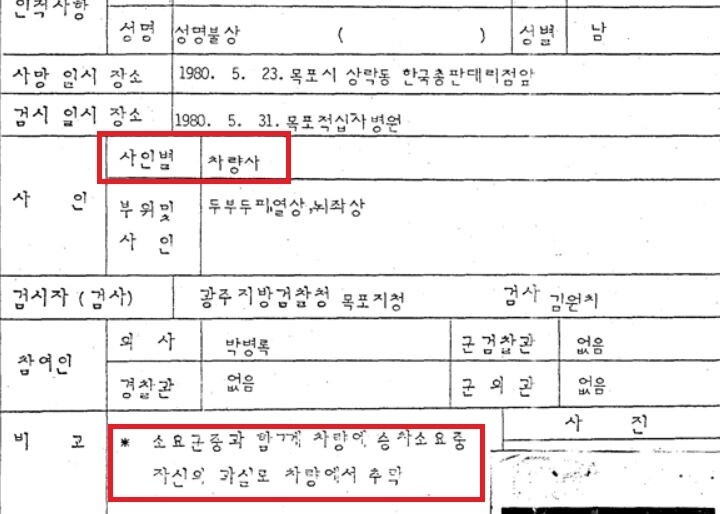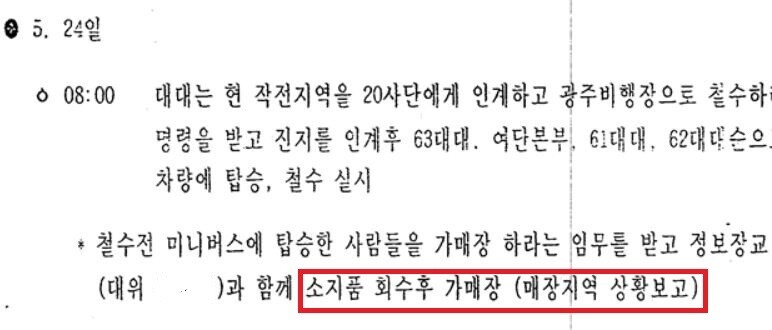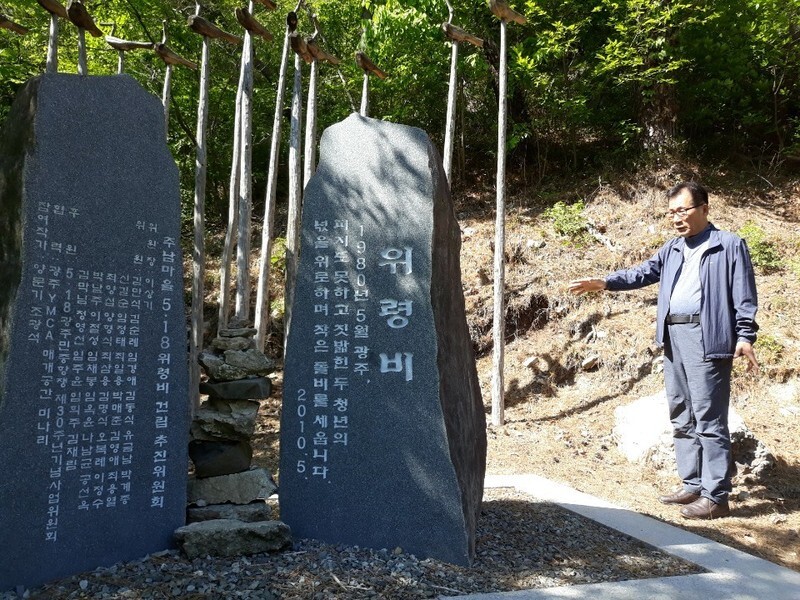hankyoreh
Links to other country sites 다른 나라 사이트 링크
Man devotes his life to uncovering military’s secret burials of Gwangju Democratization Movement victims

The bodies could be seen in the pile of dirt dug up by the excavator. There were 11 of them. His eyes went to one that had the number “1” painted on it in white. Seeing the pants and handkerchief, he confirmed that the body belonged to his younger brother.
The life of Jeong Su-man, now 70 and a former president of the May 18 Victims’ Family Members Association, was forever changed after June 2, 1980, the day his brother’s body was found buried at the 101 firing range within the ROK Army Training & Doctrine Command (Gwangju Sangmudae Military Complex). Then 31 years old, his brother Ji-yeong had gone out into the streets out of anger over the heavy-handed suppression tactics used by the airborne units; now his body lay cold and dead. Unable to comprehend his brother’s death, Jeong organized a memorial the following May at the former May 18 Cemetery in Gwangju’s Mangwol neighborhood, which led to his arrest and an eight-month prison sentence. They were harsh times.

The reason Jeong has devoted so much attention to the secret burial issue in his battle to investigate the facts of the Gwangju Democratization Movement and its bloody suppression (locally referred to as “Gwangju May 18”) has much to do with his experience seeing his brother’s dead body.
Remains of around 76 people still missing
“My brother’s body might not even have been recovered had my family not gone around asking people,” he said. Indeed, no remains have yet been found for 76 people who went missing during the events of Gwangju May 18. Around 1986, Jeong began investigating allegations of secret burials, recording up to 89 reported instances in his files based on information relayed to him and his own investigation.
“There are another 10 or so reports of secret burials that I haven’t yet finished processing,” he added.
The locations associated with the most tip-offs in connection with secret burials are the former Gwangju Prison site (11) and the Neoritjae Hill area in Hwason, South Jeolla Province (eight). The May 18 Memorial Foundation began digging for bodies in the two locations, but has yet to find any. Multiple reports were also received for the Songam human waste processing site (five), which was the setting for a massacre of civilians, as well as the village of Junam (four) where the units from 7th and 11th Special Forces Brigades (Airborne) were stationed and the former military base at Sangmudae (four). Other areas named as possible burial sites include the hills of the Ilgok neighborhood in Gwangju’s Buk (North) district (three reports) and the airfields at Seongnam and Songjeong (three).
Jeong has committed great efforts to uncovering the truths that lie buried in the ground. In his investigation of a civilian massacre in the Songam neighborhood, he befriended residents and acquired eyewitness accounts over several visits. He also carried out a full-scale examination of people admitted to mental hospitals in South Jeolla on the off chance that some of the missing might have been involuntarily institutionalized.
The most unforgettable of the secret burial allegations was a report concerning the Ilgok hills.
“It was the 1990s, and there was a pretty concrete report about five bodies in the hills of Ilgok,” he remembered. It came from an individual surnamed Noh, whom he had met at a neighborhood meeting; Noh also remembered the movements and activities of soldiers at the time. At the time he heard the report, he was unable to dig there. To this day, the location remains at the back of his mind.

Also to be resolved going forward are accounts of bodies buried within military bases. In 1996, Jeong received a phone call from someone describing himself as a taxi driver in Gangwon Province.
“I had two fares who were soldiers, they said people killed during Gwangju May 18 had been buried on their base,” the taxi driver told him. That afternoon, Jeong borrowed a car to travel to the village of Oeum in the Gandong township of Hwacheon County. He was astonished at what he discovered.
“It was the site where the 11th Special Forces Brigade (Airborne) had been stationed in Gwangju during May 18,” he said. After asking around, he met with a swine farmer who visited the base, but the farmer waved him off when Jeong asked if he would speak out.
“With the military bases, the bodies from Gwangju May 18 may end up concealed forever,” Jeong said.
“There have also been reports concerning the airfields. That’s why we need an investigation of the military bases,” he added.

As the Democratization Movement spread to other parts of South Jeolla, some victims ended up killed in Haenam County. Two defense soldiers were reportedly killed after joining demonstrations during the fighting at Useuljae in Haenam’s Bukpyeong township; Jeong received a tip that three bodies had been buried rather than two.
“I received a statement from a Naju resident surnamed Park who told me that he and the village foreman had recovered the body from the third coffin at the Haenam military base,” he said.
“During a National Assembly hearing in 1988, it came out that the retaining wall where the cemetery had been on the military base was dug out in a ‘C’ shape,” he added. The account suggests that secretly buried bodies within the base were removed to other places as the matter of massacres during Gwangju May 18 became a focus of attention.
Impossibility of recovery of bodies without soldier testimonies
The city of Gwangju has carried out exhumations on a few of the 47 reported secret burial sites, but no bodies have yet been uncovered. The problem was the rapid transformation in the landscape after May 1980 as large apartment complexes and roads went up. Another issue is the need for conclusive accounts from soldiers at the time if the secretly buried bodies are to be successfully recovered.
“It isn’t really possible to exhume these secretly buried bodies unless the soldiers who buried them identify exactly where they are,” Jeong said.
“There’s a good chance the burial sites and list were confirmed by the military at the time,” he added. Indeed, a lieutenant general surnamed Kim with the 11th Special Forces Brigade (Airborne) told prosecutors under questioning in 1995 that bodies were “buried after recovery of their personal effects, and situation reports were given on the burial sites.”
The Special Act on Investigation of the May Democratization Movement states that if the perpetrators acknowledge their acts during the investigation process and the details conform to the truth, it may be recommended that the relevant institutions either not prosecute or provide reduced sentences.
“We need incentives to get the soldiers who came during May 18 to provide reports,” Jeong said.

Since 1994, Jeong has worked on establishing a broad database of relevant information for an investigation into Gwangju May 18, including shooting at crowds in Gwangju as well as secret burial allegations. The table of contents alone lists over 75,000 pieces of information, including military data special forces combat reports and 2nd Army daily situation records, along with emergency records, autopsy records, and recordings of eyewitness accounts. A flood of relevant information comes up when the name of an individual involved in the events of Gwangju May 18 is typed into the database.
“The perpetrators and victims need to speak openly so we can resolve the final mysteries of May 18,” he said.
“Thirty-nine years have passed. Shouldn’t we at least find their bones?”
By Jung Dae-ha, Gwangju correspondent
Please direct comments or questions to [english@hani.co.kr]

Editorial・opinion
![[Column] Park Geun-hye déjà vu in Yoon Suk-yeol [Column] Park Geun-hye déjà vu in Yoon Suk-yeol](https://flexible.img.hani.co.kr/flexible/normal/500/300/imgdb/original/2024/0424/651713945113788.jpg) [Column] Park Geun-hye déjà vu in Yoon Suk-yeol
[Column] Park Geun-hye déjà vu in Yoon Suk-yeol![[Editorial] New weight of N. Korea’s nuclear threats makes dialogue all the more urgent [Editorial] New weight of N. Korea’s nuclear threats makes dialogue all the more urgent](https://flexible.img.hani.co.kr/flexible/normal/500/300/imgdb/original/2024/0424/7317139454662664.jpg) [Editorial] New weight of N. Korea’s nuclear threats makes dialogue all the more urgent
[Editorial] New weight of N. Korea’s nuclear threats makes dialogue all the more urgent- [Guest essay] The real reason Korea’s new right wants to dub Rhee a founding father
- [Column] ‘Choson’: Is it time we start referring to N. Korea in its own terms?
- [Editorial] Japan’s rewriting of history with Korea has gone too far
- [Column] The president’s questionable capacity for dialogue
- [Column] Are chaebol firms just pizza pies for families to divvy up as they please?
- [Column] Has Korea, too, crossed the Rubicon on China?
- [Correspondent’s column] In Japan’s alliance with US, echoes of its past alliances with UK
- [Editorial] Does Yoon think the Korean public is wrong?
Most viewed articles
- 1‘We must say no’: Seoul defense chief on Korean, USFK involvement in hypothetical Taiwan crisis
- 2Will NewJeans end up collateral damage in internal feud at K-pop juggernaut Hybe?
- 3[Column] Park Geun-hye déjà vu in Yoon Suk-yeol
- 4Why Korea shouldn’t welcome Japan’s newly beefed up defense cooperation with US
- 5Thursday to mark start of resignations by senior doctors amid standoff with government
- 6N. Korean hackers breached 10 defense contractors in South for months, police say
- 7[Guest essay] The real reason Korea’s new right wants to dub Rhee a founding father
- 8[Column] ‘Choson’: Is it time we start referring to N. Korea in its own terms?
- 9Kim Jong-un expressed ‘satisfaction’ with nuclear counterstrike drill directed at South
- 10[Editorial] New weight of N. Korea’s nuclear threats makes dialogue all the more urgent